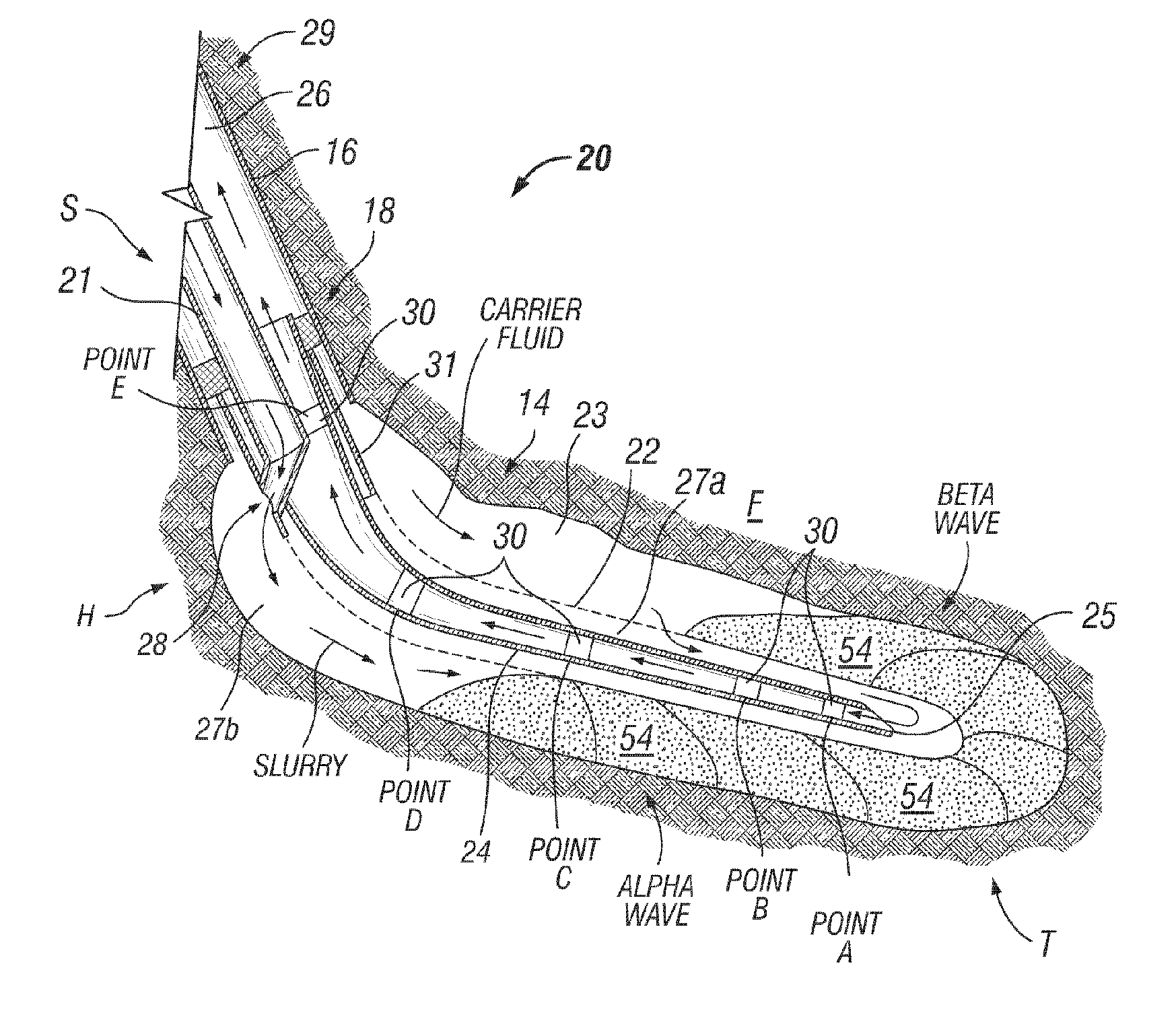Determining and Tracking Downhole Particulate Deposition
a technology of particulate deposition and measurement, applied in the field of downhole tools, can solve the problems of clogging the production flow path, damage to expensive completion equipment, erosion of the wellbore, etc., and achieve the effect of convenient “tracking”
- Summary
- Abstract
- Description
- Claims
- Application Information
AI Technical Summary
Benefits of technology
Problems solved by technology
Method used
Image
Examples
Embodiment Construction
[0027] The present invention provides methods and apparatus that are useful for characterizing the injection of fluid(s) into a wellbore, such as during particulate packing operations like gravel packing and proppant deposition. While the field of particulate packing operations includes a wide variety of methods and apparatus, those having ordinary skill in the art will appreciate that the present invention may be implemented without limitation to a particular type of operation, method or equipment configuration. Therefore, while many of the embodiments of the present invention described herein include gravel packing operations, the present invention is not so limited.
[0028] Particular embodiments of the methods and apparatus of the present invention include the use of nuclear densimeters, which are well known to those having ordinary skill in the art. For example, the nuclear tools disclosed by Storm have been used for decades to determine the density of earth rock formations surr...
PUM
 Login to View More
Login to View More Abstract
Description
Claims
Application Information
 Login to View More
Login to View More - R&D
- Intellectual Property
- Life Sciences
- Materials
- Tech Scout
- Unparalleled Data Quality
- Higher Quality Content
- 60% Fewer Hallucinations
Browse by: Latest US Patents, China's latest patents, Technical Efficacy Thesaurus, Application Domain, Technology Topic, Popular Technical Reports.
© 2025 PatSnap. All rights reserved.Legal|Privacy policy|Modern Slavery Act Transparency Statement|Sitemap|About US| Contact US: help@patsnap.com


